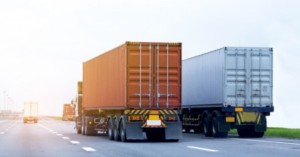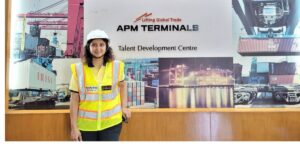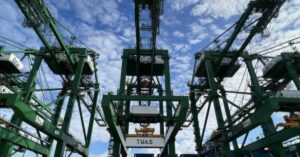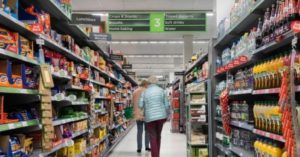As I understand, you were part of this Roadwings group of companies which was into transportation and cargo handling for some companies for many years pan India. So, you have been working with that and then I think from the learnings from that group you started this company. So, what were the gaps that you have identified and how did you conceptualize Gocon?
Roadwings still remains one of the largest handling and transportation contractors on a pan-India basis. They are the largest contractor in CONCOR and other PSUs and also they are running a lot of CFSs in JNPT in collaboration with MSWC and so on and so forth. Having worked in that..from that experience, typically in transportation we realized that there are a lot of loopholes in terms of it being an extremely operational heavy sector which causes a lot of manual loss of time, cost intervention and also we realized that it is very broker-centric market because transportation is heavily controlled by brokers, there was a lot of cost difference and a lot of cost increase to the end consumer. Now, we calculated it to be about $3 to 6 billion per annum which is just going in the brokerage cost as logistics industry in India is pegged about 100 to 110 billion and 60% of that is freight. So, we often fail to realize the importance of freight logistics in India which still comprises the majority chunk. From that perspective, we started Gocon which acts as a marketplace for the shipper and the transporter to connect directly and over there, they can conduct their transactions, they can easily connect to the small transporter who is wanting a load and carry on their transactions like how you would on an Uber or Ola and take it ahead accordingly.
In transportation, a lot of models and lot of companies have come up, offering solutions. So, to make things more clear to the audience or to the customers, can you tell me what exactly is the value proposition from Gocon? How does it work?
We operate an app-based marketplace wherein there are two applications, one is a Gocon shipper app for the shippers who can typically be an importer, exporter, CHA or a domestic manufacturer, and for the transporter, we have the Gocon transporter app, where transporters can just enroll and register their trucks and bid for the loads that are available. A value proposition for a CHA or an importer would be that he can just come on the application, float his query and connect to more than 10,000 transporters who are currently registered on our portal. So, typically, one transporter has about 5 to 7 trucks, so that’s a corpus about 50,000 trucks that he is being connected to. A lot of our customers, once they float the query, they start getting calls, bids from transporters and they can place their trucks at a cheaper cost than would currently. Also what we do for large MNCs, corporate customers who we have tied up with is that we do a contract at a certain rate to them and then we float it on the marketplace on behalf of them so that they sometimes do not want to go through the daily hassle. So, we act as a marketplace, we give them tracking, there is easy documentation exchange, there is easy invoicing and end-to-end even after like in Ola, Uber how you would get with the invoice we give them a trip report so that we ensure that there is no pilferage, and an end-to-end complete transportation solution also along with the marketplace.
So, right from the inception of this company, how was the journey till date?
It has been very difficult. It is very different from how you would run a conventional transportation or other business because it’s more towards technology, marketing. It’s about understanding the consumer and really getting into how they behave and then create technology which would be suitable to them. So, we had to really dig down upon how the transporters behave, how would we meet them, how would we convince them to come and join on the application and really understanding the consumer sentiment was one of the key learnings or challenges as well when you compare it to any other conventional business. So, that has been the journey and apart from that lot of challenges are also there and our industry still remains nascent and it will take time for it to come to that level of adoption of the technology.
You spoke about one segment, the consumer, understanding their behavior and requirement, but as I experience, even transport segment is very unorganized and it is very difficult to bring them onto the technology platform and then offer their services. So, how was it when you deal with trucking companies and transport companies to be part of this system and is it with fleet operators, a large fleet operators that you work with or individual truck owners, maybe people having one or two or few trucks also can use this platform?
So, 70% of the trucking sector is still owned by about 5 to 7 truck owners. It is still highly fragmented and unorganized and they are mostly our target audience because you see he would typically not have the marketing bandwidth to go on and do a business development and look for loads and return loads and so on and so forth. They are heavily dependent on the brokers to get the load on their trucks and ensure maximum vehicle utilization. So, those are our target audience. I would request anybody watching to come and register on our portal because we have a lot of demand on our platform where even you would have a truck in Maharashtra, Kolkata or Mundra, you would definitely get some kind of a load on the truck, so it helps the small transporters get payment on time; we ensure payment is on time. We ensure that the truck utilization on his asset is maximum so we can pay off his EMI, etc. and also overall other facilities we have on the app. We provide tyres to JK Tyres, we provide them FASTag through Paytm so these other ancillary services also give a whole ecosystem and boost to the transporters whom my heart goes out to, this is for them. Already registered big transporters do not really need that much. Of course, they can always use the application for additional load, but the small transporters are whom we are more aligning towards.
Last year, you partnered with Syama Prasad Mookerjee Port which is Kolkata Port, offering your services. So, how did it happen, making port as an operator and how does it work actually?
Syama Prasad Mookerjee Port, under the leadership of Chairman, Mr. Vinit Kumar, had floated one tender or an EOI, in which we participated. We successfully won, even among larger and bigger players, lot of well-funded players who are into the technology space, but they chose us because they understood that we are a logistics company getting into technology hence we have the ground-level expertise, the key partnerships that are required in the port area and also the practical know-how on how things would execute. So, based on that, we were awarded the preferred technological partner. Their basic idea was since Kolkata Port is a riverine port, it’s a city-based port, there’s a lot of congestion inside the port, they wanted us to do the matchmaking for an export-loaded container with an import-loaded container. So, what we have basically done which is showing early signs of success, we have tied up with all the large importers in Kolkata Port Trust through some contracts and they started posting on our application. So, what typically happens is that any trucker who is inside Kolkata Port with an import loaded truck is…let’s say his truck is inside and now he is not sure about what load he is going to get. So, at that point of time his truck is empty. So, all he has to do is to come on the application and see the import loads available on the platform on that point of time. So, that would ensure that there is both way movement, in and around the port. So, he would just typically go and call the customer or us, or bid for the load and then he would pick up an import-loaded container. So, that ensures about matching of export- and import-loaded containers and reduces the overall traffic inside the port, it increases the revenue for the truck, for the transporter and also really helps our customer to get the container moved out fast so the evacuation time also the customer reduces. So, that’s how we are developing the system and its showing early signs of success where about 10 to 15 trucks, about in 6 hours were able to move out of the port. So, it is really helping the ecosystem as well.
So, do you think, going forward, this model will be chosen at other ports or do you see an opportunity at other ports?
Somehow Cochin Port had approached us and we are working with them as well to implement this but this should also be implemented in Mundra and JNPT. This was implemented in JNPT about 2 to 3 years back, but somehow it didn’t work…the operator couldn’t strategize properly. They focused more on the local movements and couldn’t execute, but I believe there is still an opportunity which lies to execute this in JNPT and Mundra where there is maximum volume. Apart from that, we are also tying up with all Concor ICDs and CFS to implement a similar solution and offer them something around ICDs and CFS which also has a lot of major chunk of volume.
I understand, for online operations, you don’t require to spread across the country but how is your organization structured and how are your services offered? Is it pan-India only or you have expanded our neighbouring countries like Nepal, Bhutan, Bangladesh because lot of cargo moves to these countries by road?
Nepal being a landlocked country, road is the only viable way of transporting. Through Kolkata, a lot of Nepal importers have approached us because they do not have the transparency in where the truck is. So, we are providing them the solution for basically tracking the containers to ensure that what is the ETA so that they can plan their dispatch and unloading accordingly. So, we are doing a lot of movement through Nepal as well and apart from that we are focused more towards JNPT, Mundra and Kolkata, them being the major volume, and of course Concor, pan-India ICDs and CFS.
We discussed couple of challenges like understanding consumer needs and their requirements and also trucking companies to adopt this technology coming forward. Now with this corona pandemic, even the logistics has become a challenge, especially road transportation. Every state has different border guidelines. Some go into lockdown, some open up and this is really disrupting the movement of ports. So, in such a scenario, how far your operations got affected or how best you can make your solution work in these kinds of scenarios?
Covid has actually helped us to gain more customers and expand our footprint, that is because let’s say you are an importer or an exporter, you would typically empanel about 3 to 5 transporters to get your transportation done. Now, in times of Covid, due to driver problems, etc., their regular transporters couldn’t suffice the requirement. So a lot of our customers have come on to our platform because they were initially managing with 3 to 5 transporters, instead we have about 30 to 50 transporters traveling and having trucks on the same route. So, that helped them to get more load done and to get more trucks transported and apart from that, the whole demand-supply was disrupted in the ecosystem. Now, although yes, there is still an issue, but that demand-supply mismatch or that gap was fulfilled through the platform because what we are essentially doing is opening up the ecosystem. We are just making it so open that if we have the whole ecosystem onboard, then it would really help with the matchmaking and these demand-supply issues which were faced in Covid would be solved.
Going forward, what is your target or ambition? Where do you want to see Gocon, and in the short-term and the long-term, what are your goals and what is the strategy that you have to reach those goals?
It is our long-term goal to get each and every trucker associated with the platform so that they are empowered in terms of getting credit, loads, other ancillary service so that the quality of business and their overall life is also improved because we are essentially giving infrastructure to the small rides and once we have the whole ecosystem on board, I mean 80% of the CHAs, importers, exporters, and all transporters. Then you know that the matchmaking would happen and you would see a lot of magic happening because they would be getting return loads, more movements also done….small local movements which take a lot of time…if a truck is nearby, that would matchmake with the load available and you would take it back to the factory. So, a lot of things would happen if the whole ecosystem comes onboard. So, our long-term vision is to get them onboard and the way to do it is we are tying up with ports, CFS and ICDs. As I mentioned and then with their support to reach the consumer, customer, mainly a shipper or a transporter and then get the whole marketplace activate.
Where do you see the revenues coming from, with all this opportunity, have you understood the market scope and then definitely revenue stream is there?
So, our revenue stream is mainly with the top MNCs, corporates and other large clients who you will do a typical contract with and we have already secured a number of contracts with and transporting it and as for the small guys, we would charge a small subscription to use the mobile application wherein they can just come on the platform and connect with the transporters and just put the query and they will start getting calls from all transporters. So, that’s how we aligned our revenue and opportunity, etc.
To tap this available opportunity in the marketplace and to build the ecosystem that you talked about, what is that you are looking at? Are you looking at getting some more investment or funds into the company and do you see any interest in that kind of investment happening?
Currently we are quite comfortable and are not looking for any investment active per se, currently but from next quarter onwards, as we expand our operations more towards the Northern and Southern side of India, we would be looking for some kind of an investor and also we have been in talks with some private equity investors to take it up accordingly.












